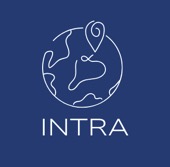Tax Reading Group (02/25)
| Date: | 13th February 2025 |
| Time: | 19:00-20:00 CET Time |
| Location: | Online |
| Participation link: |
Microsoft Teams Need help? Meeting ID: 390 658 263 088 Passcode: pq2TC3vn |
| Article: |
Tsilly Dagan, The Tax Treaties Myth, 32 N.Y.U. J. INT'L L. & POL. 939 (2000) |
|
Click to download the article: |
Article |
| Presenter: | Anne Wanyagathi |
| Discussant: | Ezgi Arik |
How to Prepare
1) Read the article in advance: “The Tax Treaties Myth”
2) Think about one or two sentences in the article that intrigued you.
3) Reflect on these guiding questions:
· The article critiques tax treaties as disproportionately benefiting capital-exporting nations and multinational enterprises. Currently, the UN is pushing for a new multilateral tax convention that aims to reshape global tax governance, potentially shifting its influence away from the OECD. This initiative challenges long-standing assumptions that tax treaties, primarily shaped by OECD countries, are necessary for global tax coordination. Given this, do you think a UN-led tax convention could address the equity concerns raised in the article?
· The author questions the prevailing assumption that unilateral devices would cause undesired global tax consequences. The OECD’s Multilateral Convention on Pillar One’s Amount A aims to reallocate taxing rights to market jurisdictions, while many countries have implemented unilateral measures such as Digital Services Taxes (DSTs) to capture revenues from digital businesses. Given the current circumstances of international taxation, does the conventional assumption that unilateral measures are detrimental still hold true in today’s tax landscape?
· The article suggests that developing countries often prioritize attracting investment over maximizing tax revenue. If this assumption holds true, how should a global tax governance structure be designed to balance the need for investment incentives with fair revenue collection? Should international tax rules be tailored differently for developing and developed countries, or is a uniform framework the best approach?
Meeting Format
1) Welcome & Introduction (15 mins.)
· A brief welcome and overview of the session
· A concise summary of the article’s key points and arguments
· Sharing the sentences in the article that intrigued you
2) Guided Discussion (30 mins.)
· Discussions around the guiding questions provided pre-meeting
3) Wrap-up & Closing (15 mins.)
· Summarize key takeaways
· Final thoughts
· Next steps
If you have any questions, please don’t hesitate to contact us at
Looking forward to an engaging and insightful discussion with you!
Best regards,
Ezgi
INTRA Tax Reading Group
